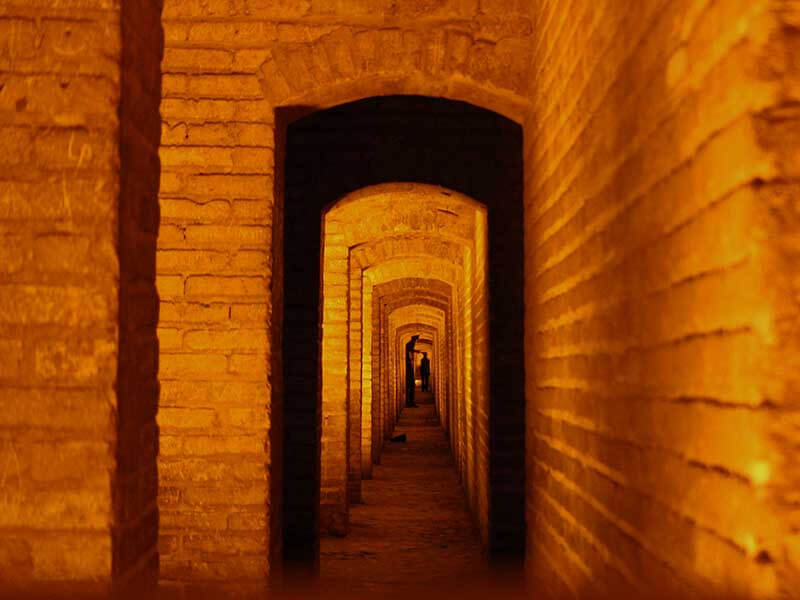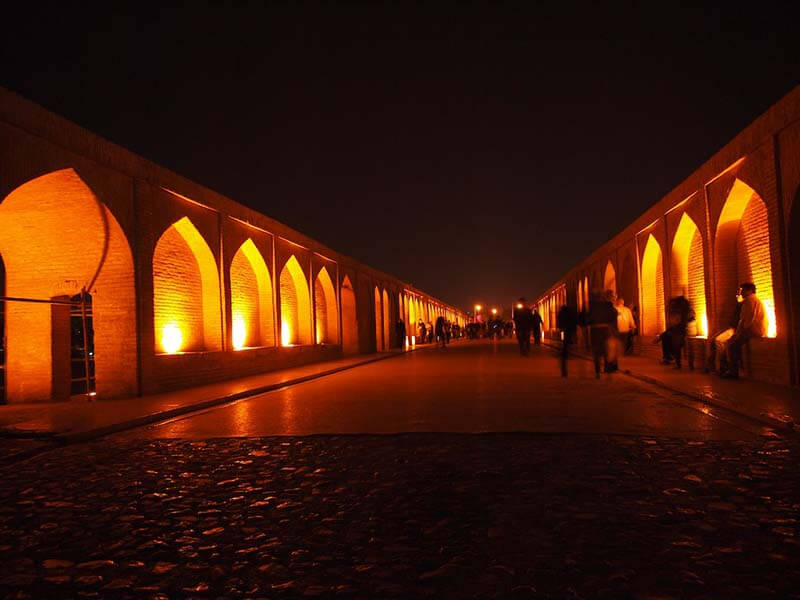
Throughout history not many of Iran’s capital cities had a river inside it. One of the reasons Isfahan was chosen as the ruling city of the Safavid empire, was the largest river of the Iranian plateau, the zayanderud river.
On this river a number of 11 bridges where built. The largest was Siosepol or the Allahverdi Khan Bridge. This bridge is unique in design and form, not only was it used as a bridge for crossing but also as a dam.

At the start of the 16th century after Isfahan was selected as the capital, by Shah Abbas I, it was a crossroad of international trade and diplomacy. At that time Persia had reached to its pinnacle of briskness. Isfahan had parks, libraries and mosques that amazed Europeans, who had not seen anything like them at home.
The construction of this bridge started in 1602, by the order of the 5th Safavid King, Shah Abbas the first. It was named after the man who supervised its construction, Allahverdi khan.
Allahverdi khan was a man of curious fate. Born a Christian in Georgia, he was sold as a slave and sent to Iran. He led a miserable life until he was eventually made a servant in the court of Shah Tahmasb Safavid. He had a striking career and at the time of Shah Abbas, he became the Governor General of Fars and the head of most of Iran’s southern provinces. Eventually he became Shah Abbas commander in chief. At that time the king relied on his suggestions more than any other adviser around him.
Si-o-se-pol bridge served particularly as a religion connection. It connected parts of the city where Muslims lived, to the Armenian quarters of Isfahan known as Julfa.

What is Si-o-se-pol’s structure & architecture?
This bridge is one of the most praised structures of the city of Isfahan. The bridges well-built piers and imposing towers are made of stone, but its superstructure is brick. Yellow bricks and limestone where the main materials used, which was very common in the Safavid structures.
The Siosepol bridge is around 300 meters long and 14 meters wide. This bridge is a vaulted arch bridge, consisting of two parallel rows of 33 archers. This is where the name of the bridge comes from, “Si-o-se” in Farsi means 33, referring to the number of archers, and “Pol” means bridge.

